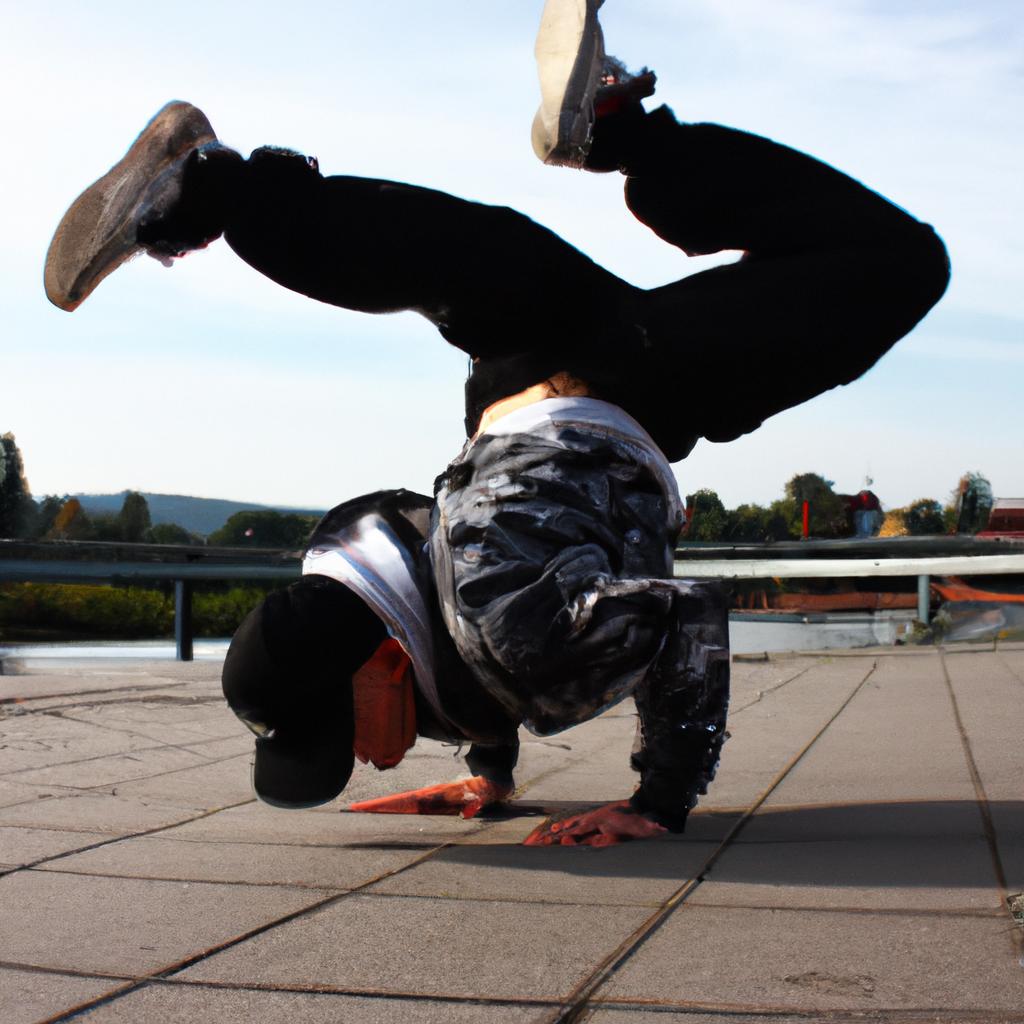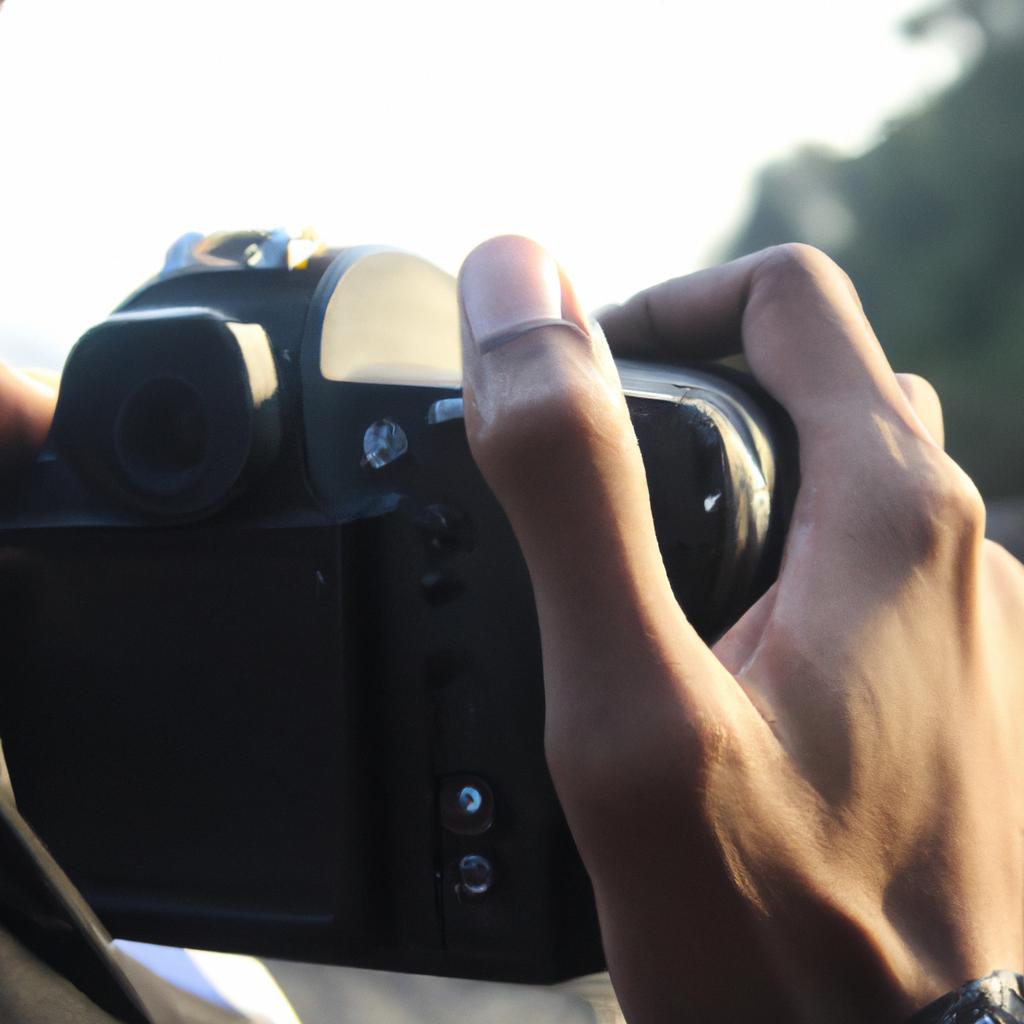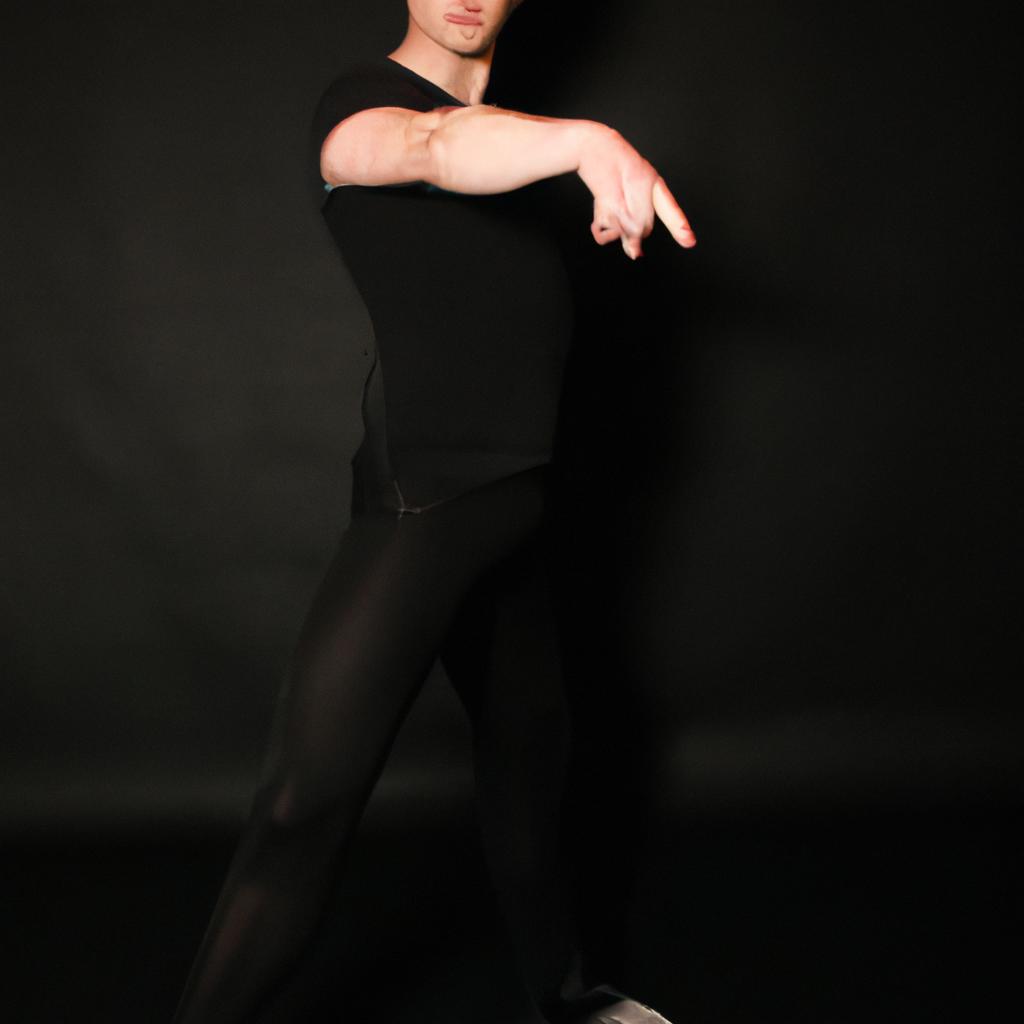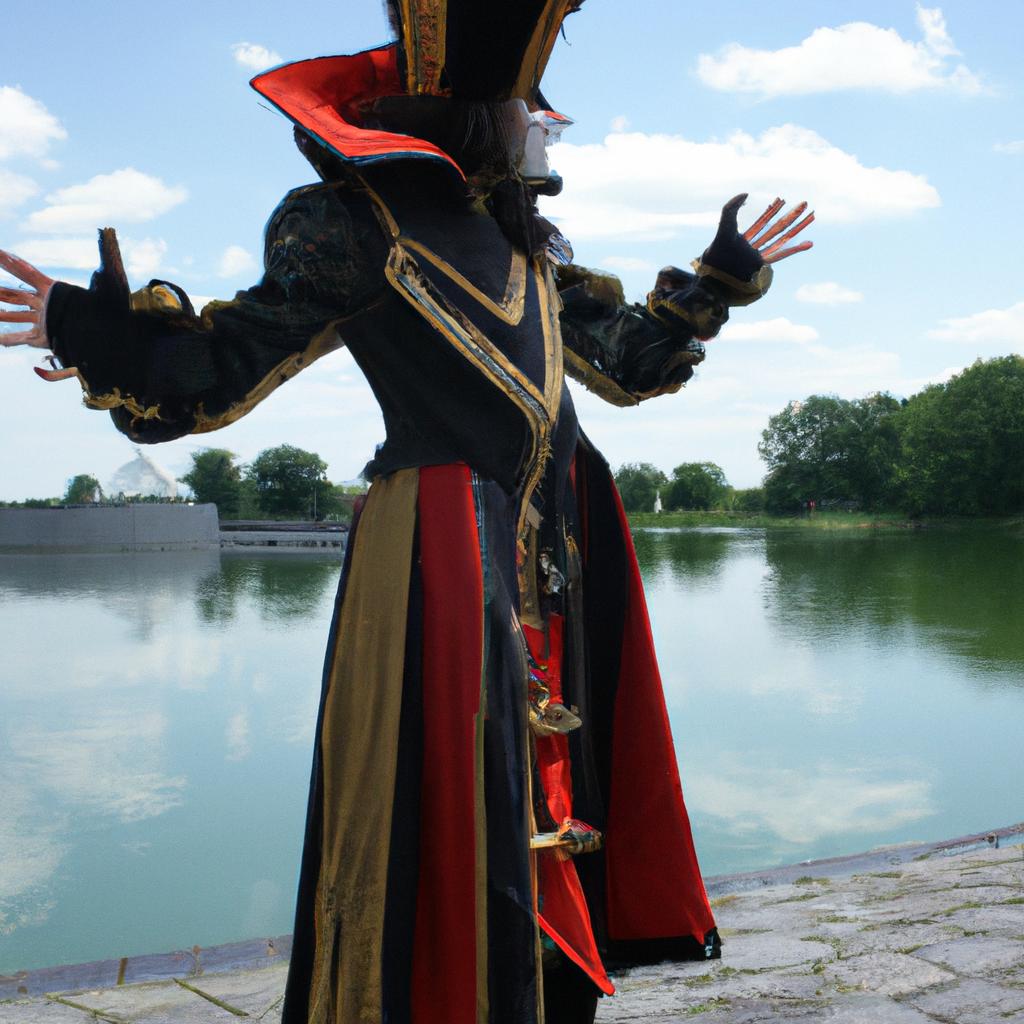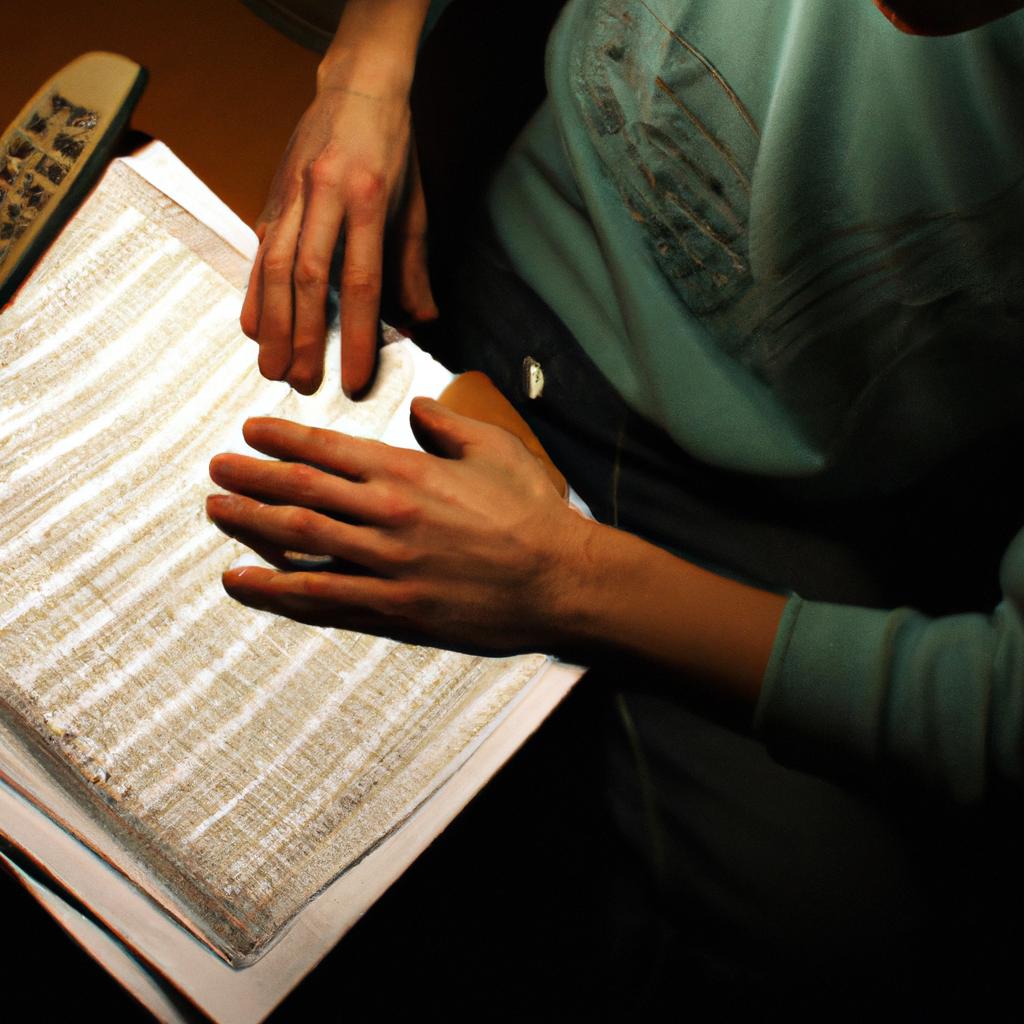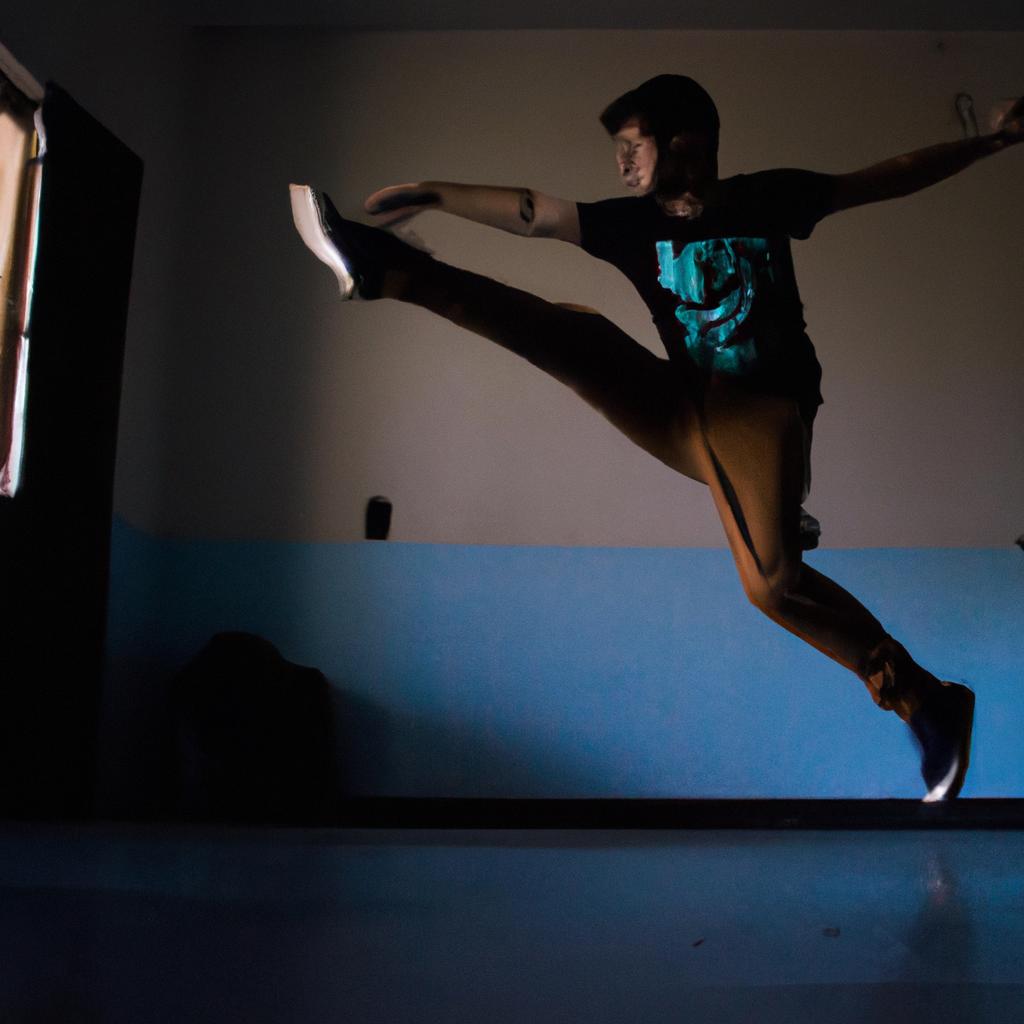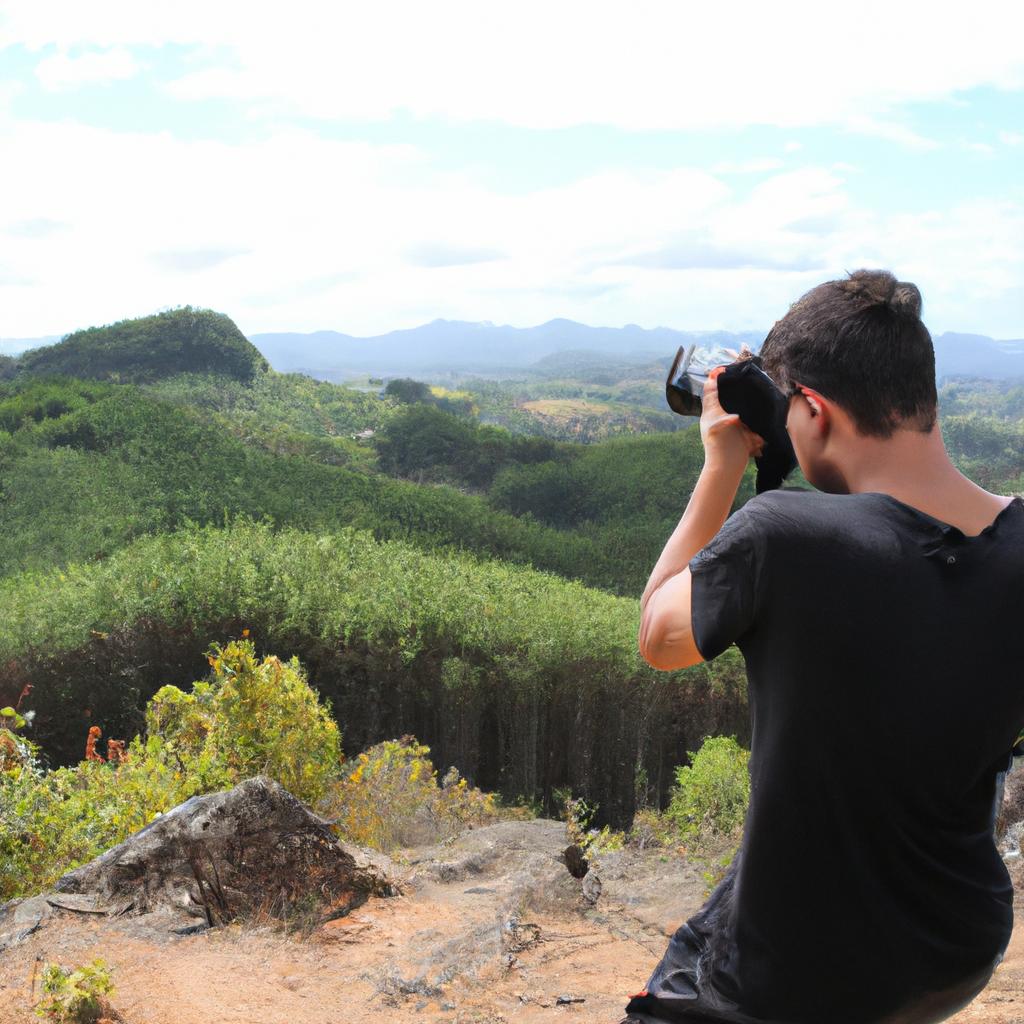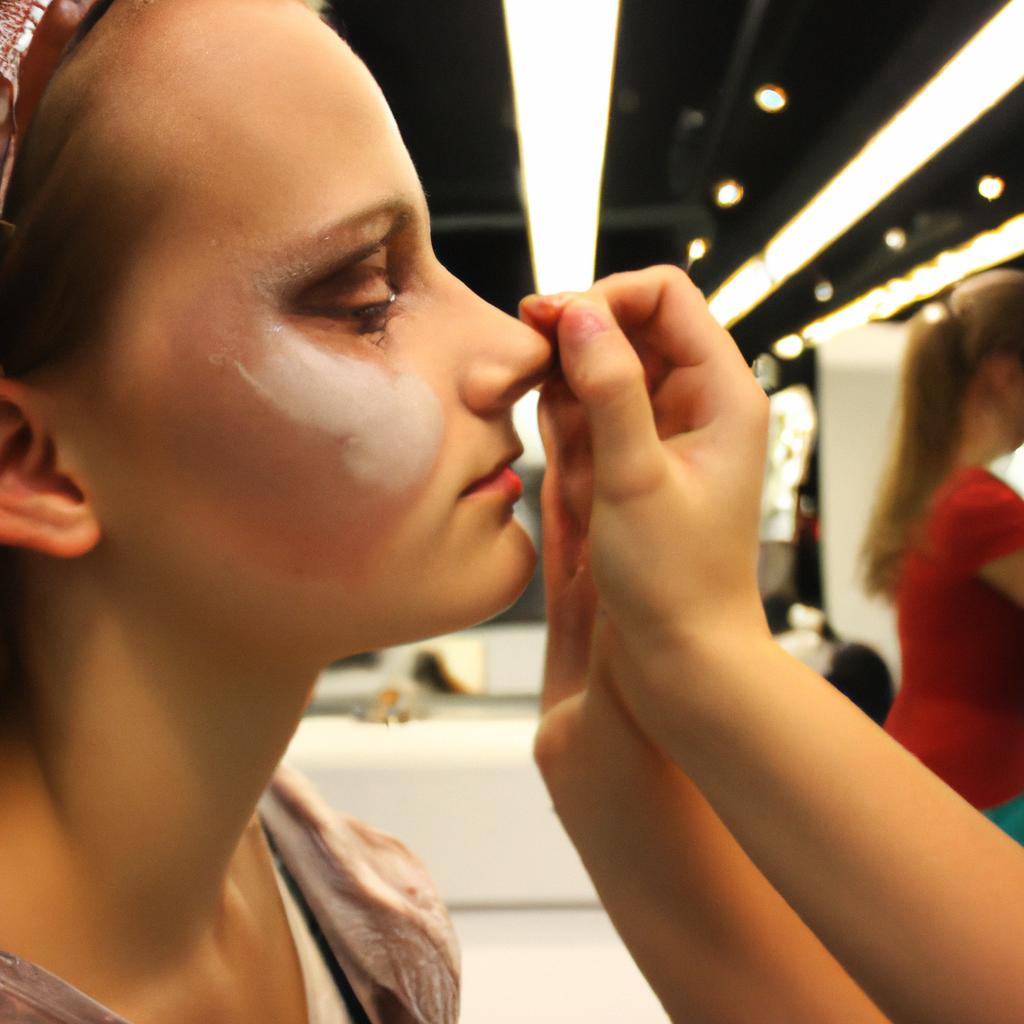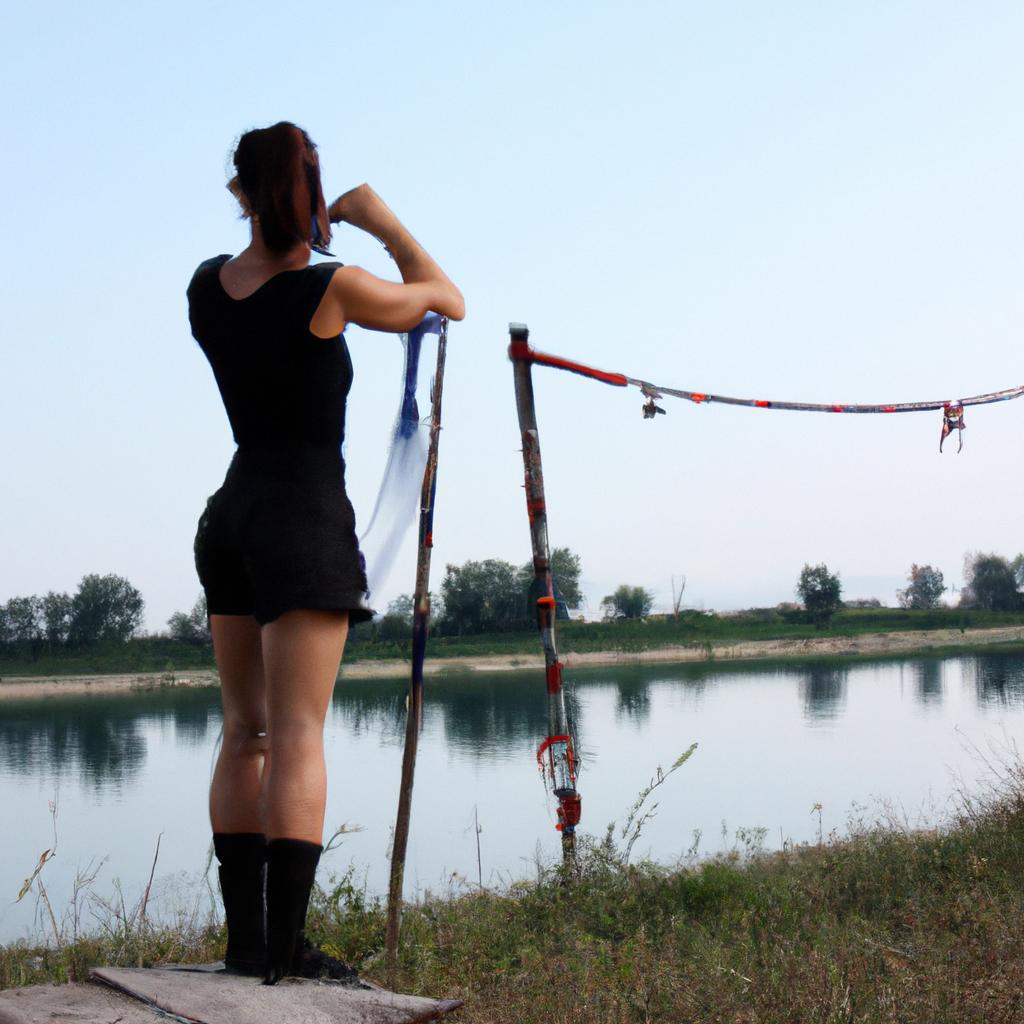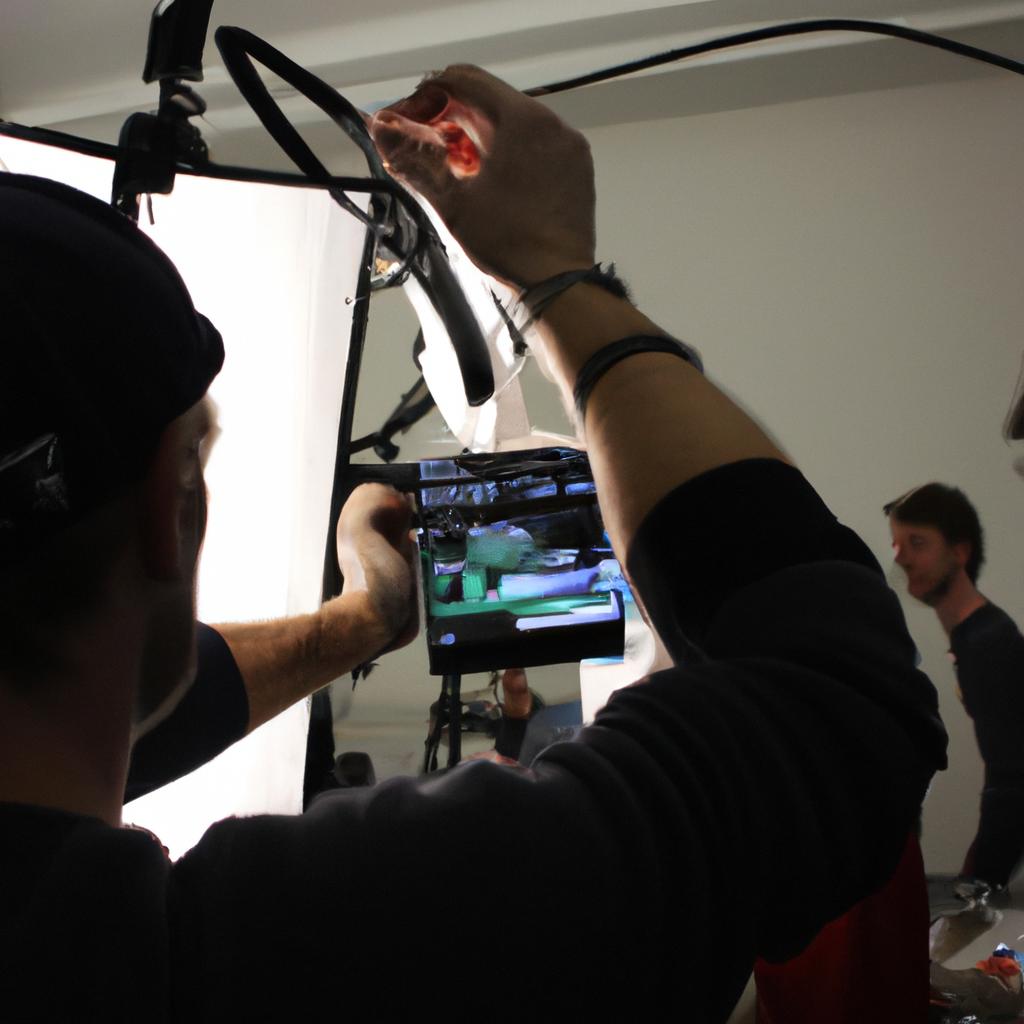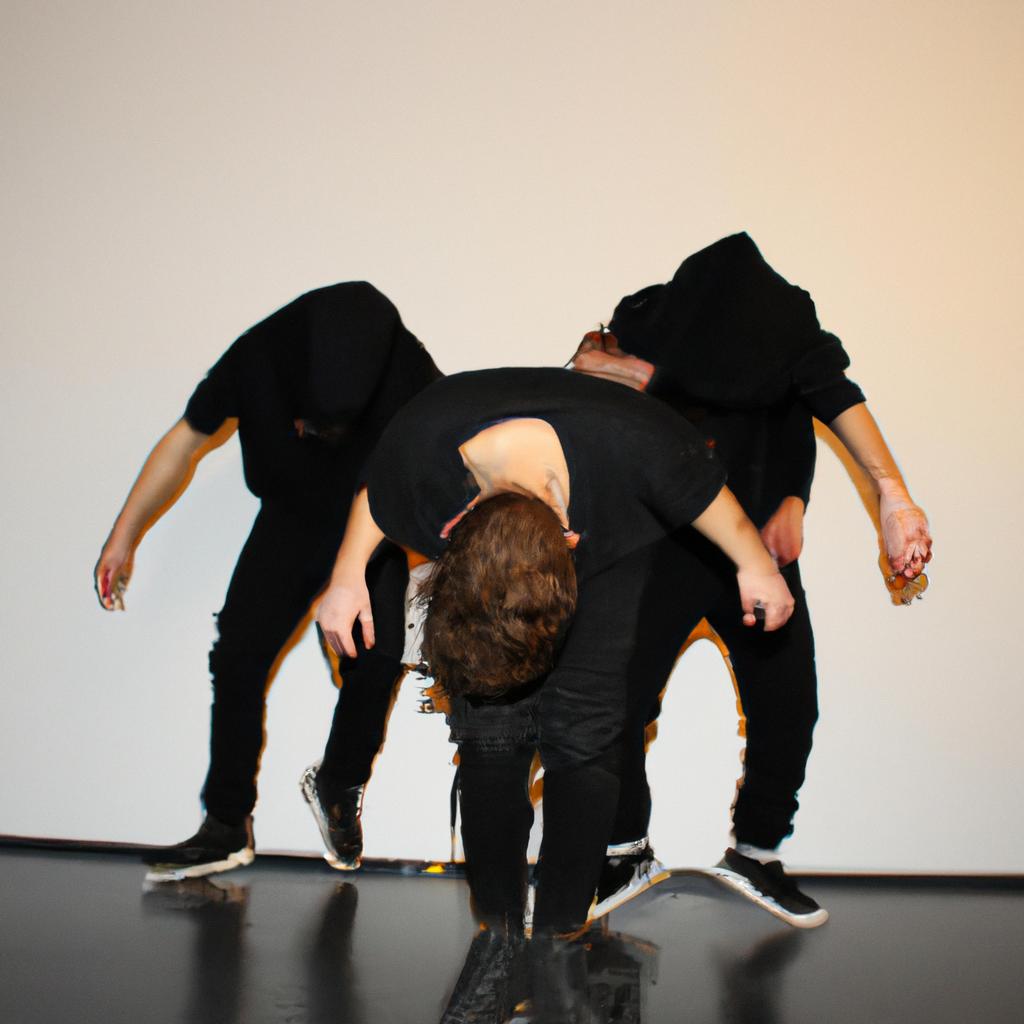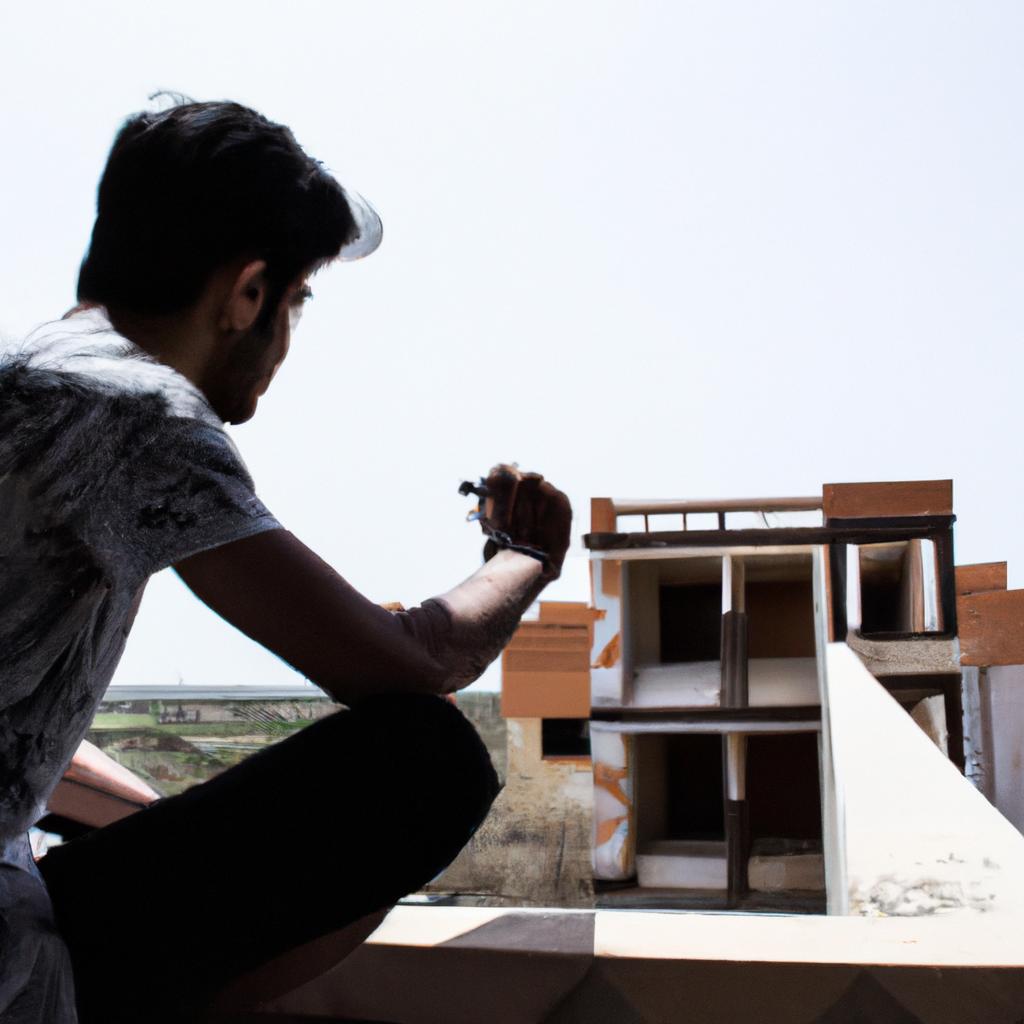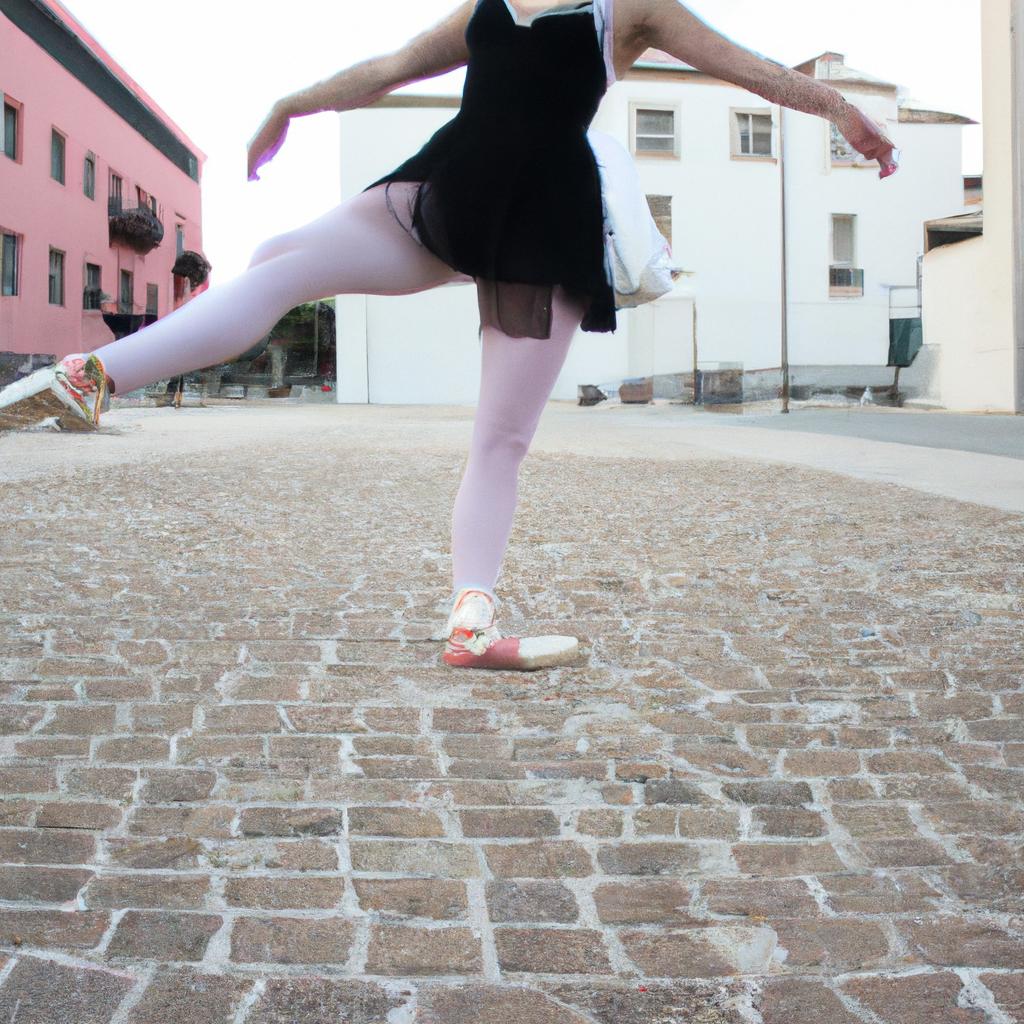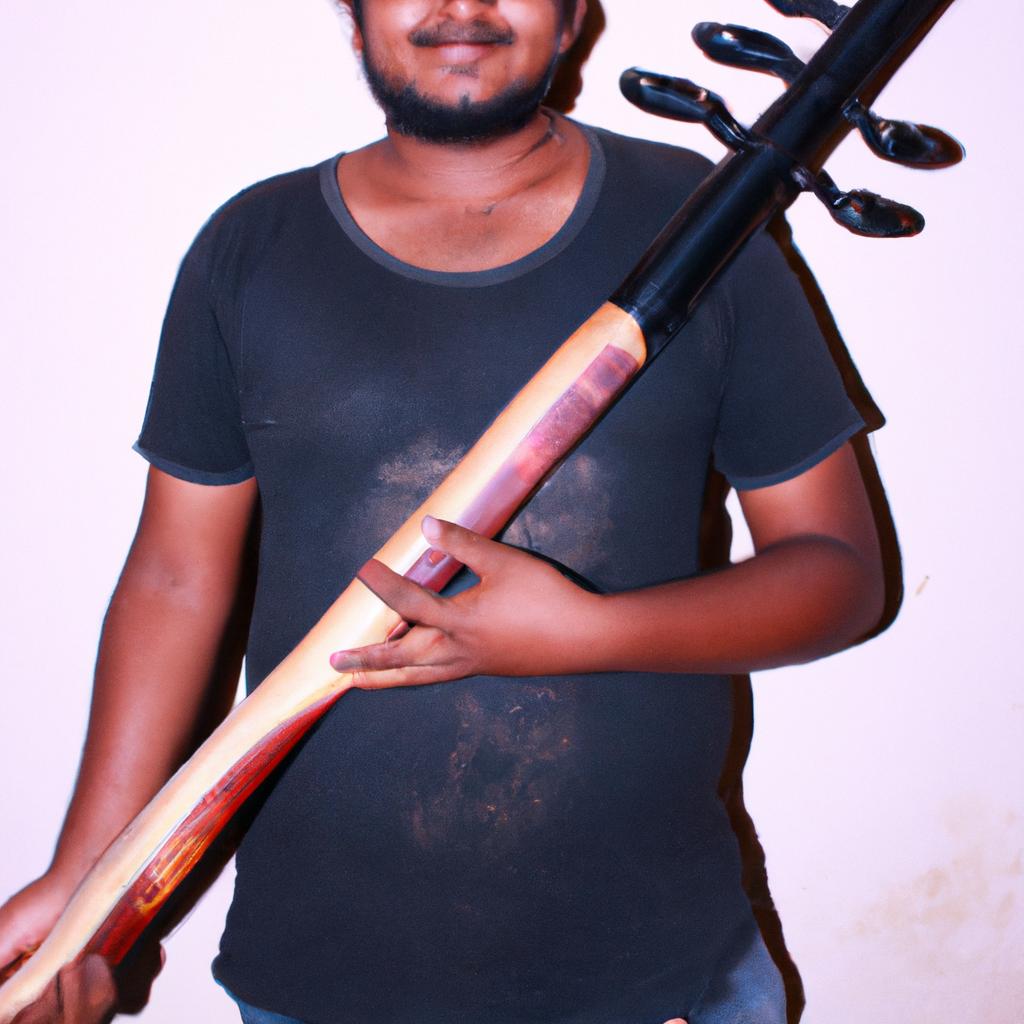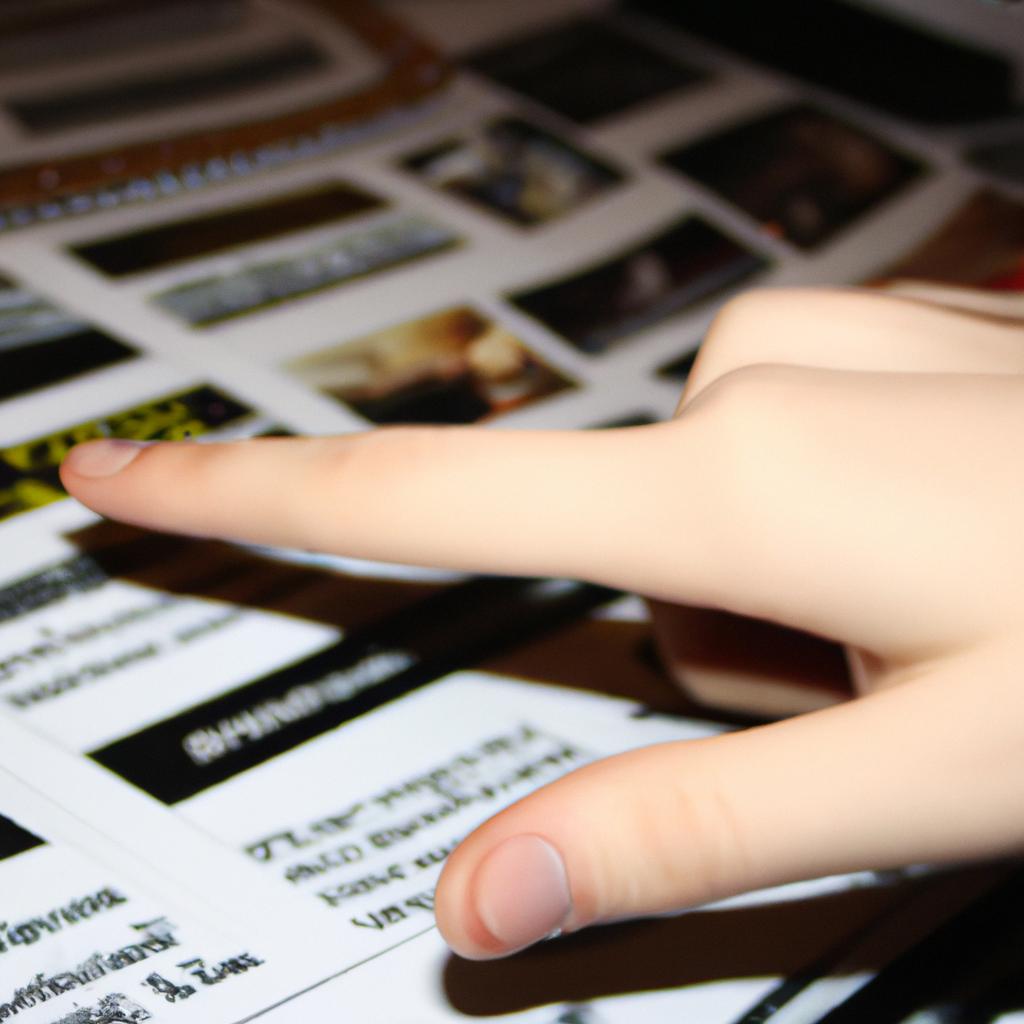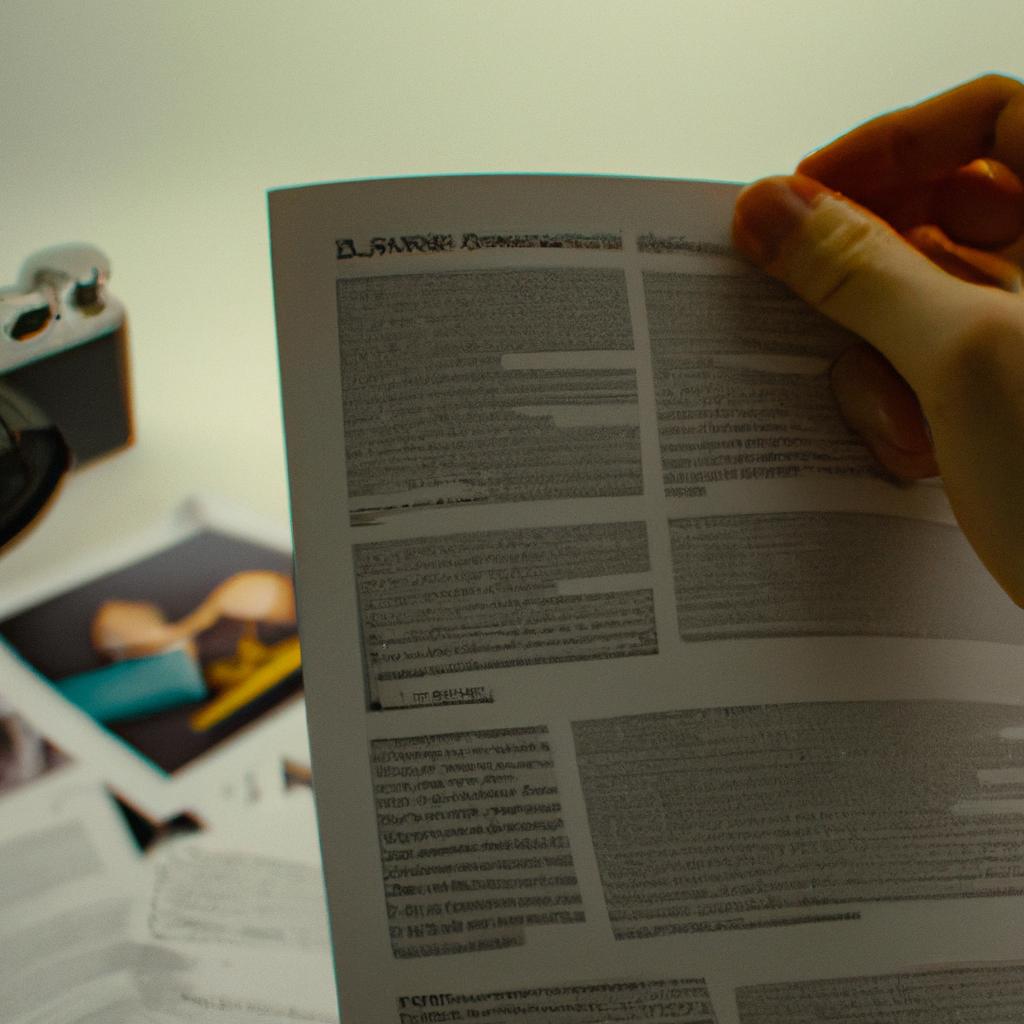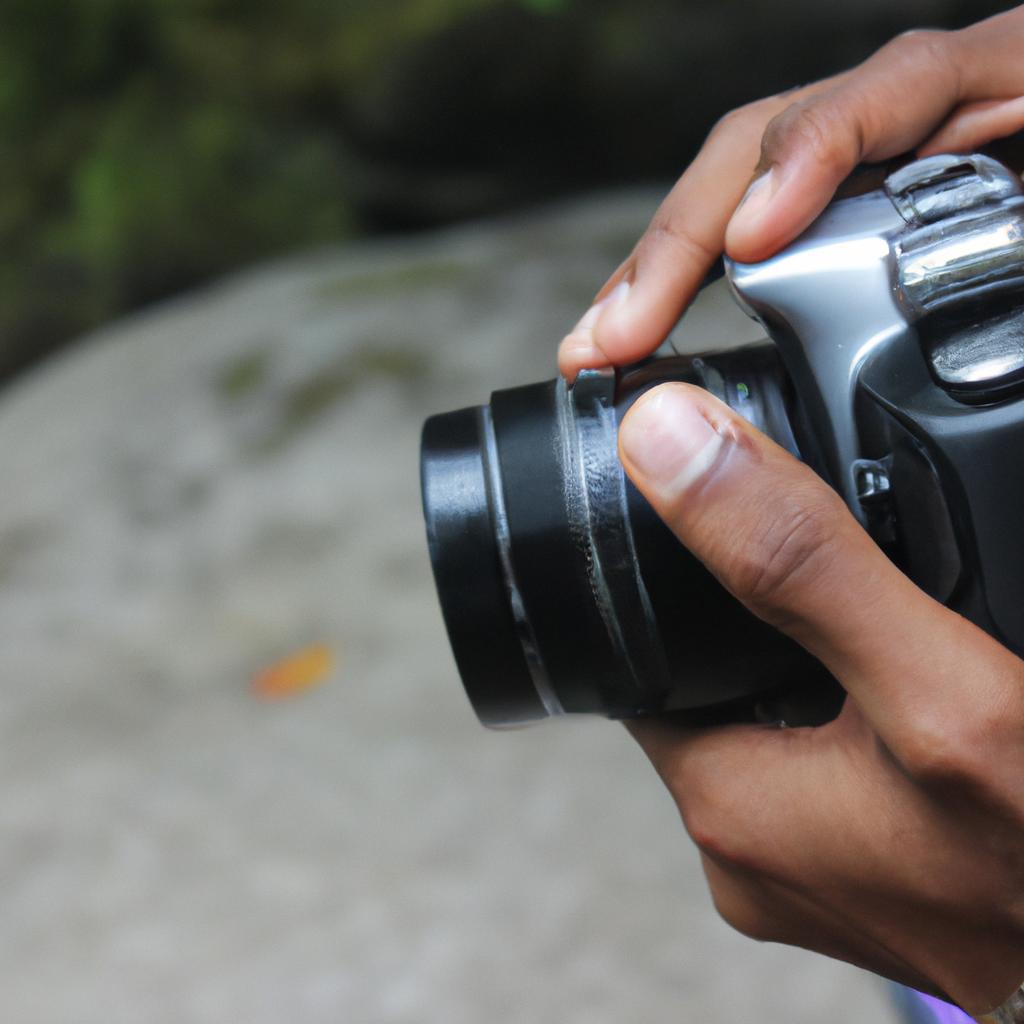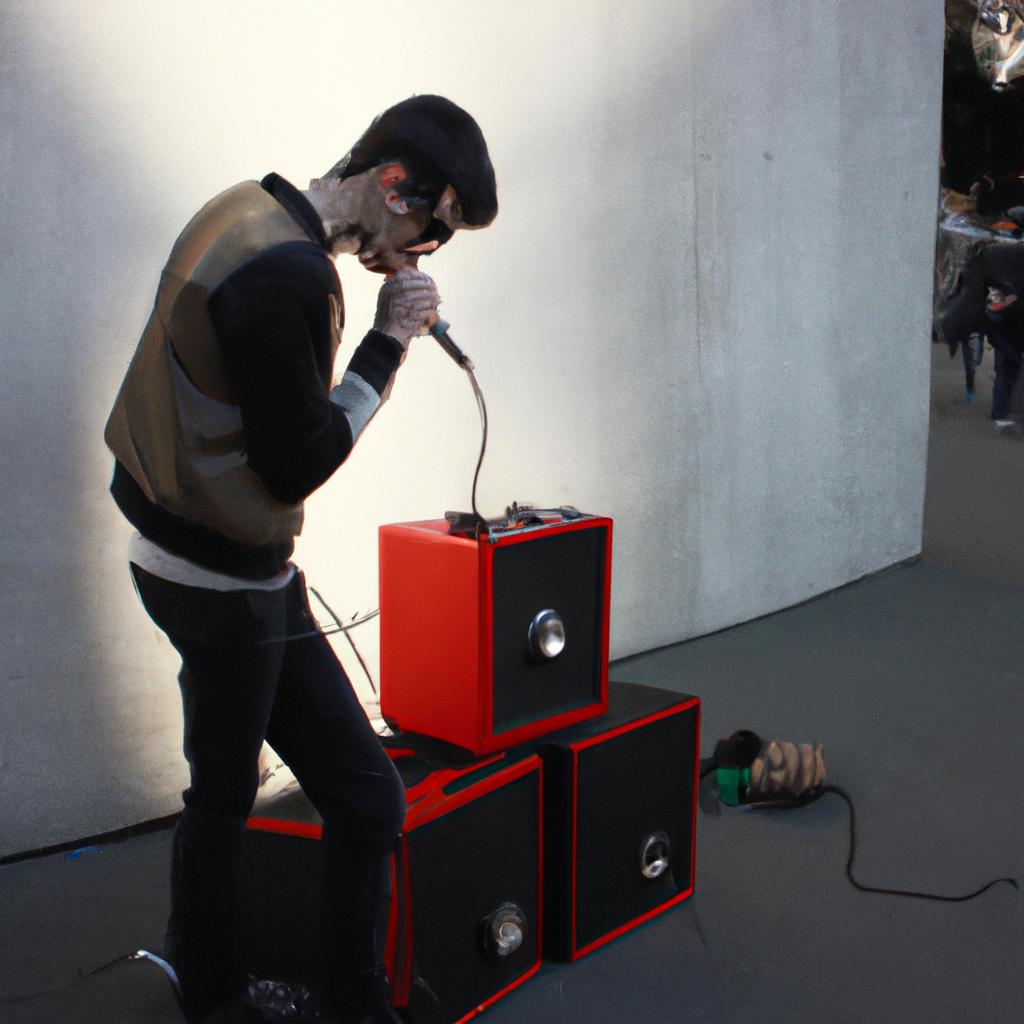The art of theater is an intricate form of artistic expression that encompasses various elements, including context in the realms of both arts and music. By analyzing the interplay between theater and its broader artistic and musical environment, we can gain a deeper understanding of how this dynamic medium contributes to cultural development and creative innovation. For instance, let us consider the case study of William Shakespeare’s renowned play “Hamlet.” Within this masterpiece, we witness not only the power of theatrical performance but also the incorporation of music as a vital component that heightens emotional depth and narrative impact.
To comprehend the significance of theater within the larger context of arts and music, it is crucial to explore historical developments and influences. Throughout history, theater has evolved alongside other art forms such as painting, sculpture, literature, dance, and even architecture. This interdisciplinary nature allows for cross-pollination among different artistic disciplines, resulting in innovative techniques and concepts. Additionally, theater often draws inspiration from various genres of music, ranging from classical compositions to contemporary sounds. The integration of music into theatrical productions serves multiple purposes; it enhances dramatic tension, establishes mood and atmosphere, reflects characters’ emotions or motivations through melodies or harmonies, and reinforces thematic motifs.
Understanding the contextual relationship between theater and arts Understanding the contextual relationship between theater and arts requires delving into the historical, cultural, and societal contexts in which theatrical productions are created. Theater often reflects and engages with contemporary artistic movements, such as the Renaissance, Romanticism, or Modernism. It not only draws inspiration from visual arts like painting and sculpture but also incorporates elements of literature and poetry into its scripts. By studying these connections, we can appreciate how theater contributes to the broader artistic landscape by offering a unique platform for creative expression.
Similarly, exploring the interplay between theater and music is essential to understanding their symbiotic relationship. Music has been an integral part of theater since ancient times when it was used to accompany performances in Greek tragedies or Roman comedies. Over the centuries, composers have tailored their compositions specifically for theatrical productions, creating scores that enhance the emotional impact of scenes or reinforce narrative themes. Moreover, musical numbers within plays or musicals offer a distinct mode of storytelling that combines both verbal and non-verbal forms of communication.
Ultimately, comprehending the contextual relationship between theater and arts allows us to appreciate the multi-faceted nature of this art form. By analyzing how theater interacts with other artistic disciplines like music and visual arts, we can gain insights into its transformative power and its ability to reflect and shape cultural identities throughout history. This understanding enables us to engage with theater more deeply while recognizing its contributions to artistic innovation and societal development.
Costume Design
One of the essential components in theater production is costume design, which plays a crucial role in bringing characters to life and enhancing the overall visual experience for the audience. A well-designed costume not only reflects the character’s personality but also helps convey their emotions, social status, and even cultural background.
For instance, imagine a historical drama set during the Victorian era. The lead female protagonist wears an elaborate gown made of rich fabrics with intricate lace detailing and corseted bodice. This costume choice immediately transports the audience into that specific time period and allows them to connect more deeply with the character’s story, creating a sense of authenticity.
To evoke an emotional response in the audience, here are some key elements that make costume design impactful:
- Color palette: The colors chosen for costumes can evoke various emotions within the audience. For example, vibrant reds may symbolize passion or danger, while soft pastels could represent innocence or tranquility.
- Texture and fabric choices: Different textures and fabrics create visual interest and provide insight into a character’s lifestyle or occupation. Flowing silks might suggest elegance or sophistication, while rougher textiles could indicate someone from a lower socio-economic class.
- Accessories: Thoughtfully selected accessories such as hats, gloves, or jewelry can add depth to a character’s identity or serve as symbolic representations. A ring on a finger might imply marital status or wealth, while an eyepatch could hint at hidden secrets or past trauma.
- Silhouette and fit: The silhouette of a costume can communicate important information about a character’s body shape or societal expectations. A fitted dress might emphasize femininity and attractiveness, whereas loose clothing may signify modesty or practicality.
Table: Emotional Responses Evoked by Costume Design Choices
| Emotion | Costume Design Choice |
|---|---|
| Elegance | Flowing silk gowns |
| Power | Structured suits |
| Mystery | Cloaks and masks |
| Rebellion | Punk-inspired outfits |
In considering the emotional impact of costume design, it becomes evident that even small details can significantly enhance a theatrical production. From color choices to fabric textures, each decision contributes to the overall storytelling experience.
Transitioning into the subsequent section about “Lighting Techniques,” it is important to note that while costume design sets the visual tone for characters on stage, lighting techniques further enhance their presence by creating atmosphere and emphasizing specific moments or emotions.
Lighting Techniques
Building upon the transformative power of costumes, lighting techniques play a crucial role in enhancing the theatrical experience. By manipulating light and shadows, directors are able to create various moods, emphasize certain elements of the performance, and transport audiences into different realms. Just as a painter carefully selects colors on their palette, lighting designers meticulously craft their compositions to bring out the essence of each scene.
Lighting Techniques:
One example that illustrates the impact of lighting techniques is found in Shakespeare’s tragedy, Macbeth. In Act 1, Scene 5, Lady Macbeth receives an eerie letter from her husband detailing his encounter with witches. As she reads this letter alone under dimly lit candles, casting long shadows across her face, the audience becomes aware of her dark desires and ambition for power. This dramatic use of low-key lighting sets the tone for subsequent events and foreshadows the darkness that will consume both characters’ lives.
To further understand how lighting techniques contribute to the overall artistic effect within theater productions, consider these key aspects:
- Focus: Through selective illumination or highlighting specific areas on stage, lighting can guide viewers’ attention towards important actions or characters.
- Mood setting: The color temperature and intensity of light sources greatly influence emotions evoked by scenes. A warm-toned spotlight may convey intimacy and romance while cool blue hues might evoke feelings of melancholy or isolation.
- Time and place establishment: Lighting creates an illusionary world onstage by simulating natural sunlight or moonlight at different times of day or night.
- Symbolism enhancement: Light can be used symbolically to represent abstract concepts such as hope (through bright beams) or despair (through deep shadows).
By employing these techniques effectively, lighting designers enhance the narrative depth and emotional resonance within a production. It is through their artistry that audiences are transported beyond mere observation into actively feeling part of the story unfolding before them.
Table Example:
| Lighting Technique | Description | Example Scene |
|---|---|---|
| Spotlight | Directing a focused beam of light on a specific area or character, drawing attention to them | The final soliloquy in Hamlet |
| Gobo Projection | Projecting patterns or shapes onto the stage to create visual interest and enhance atmosphere | A forest scene in A Midsummer Night’s Dream |
| Silhouette | Backlighting a performer in such a way that their body appears as dark outlines against a brighter background | A dance sequence depicting shadows in West Side Story |
| Crossfade Transitions | Gradually changing lighting from one color or intensity to another, creating smooth transitions between scenes | A transition from day to night in Les Misérables |
Transition into subsequent section about “Stage Decoration”:
As crucial as lighting techniques are for setting the mood and tone onstage, they work hand-in-hand with other artistic components. Stage decoration serves as an essential element in transforming barren spaces into captivating theatrical environments, transporting audiences further into the realm of imagination.
Stage Decoration
In the world of theater, lighting techniques play a crucial role in creating an immersive and captivating experience for the audience. Just like a painter uses different brush strokes to convey emotions on canvas, lighting designers use various techniques to enhance the mood, highlight key elements, and evoke specific emotions within a theatrical production.
One example that showcases the power of lighting techniques is the renowned musical “Les Misérables.” During the climactic scene where Jean Valjean sacrifices himself for Marius, a stark spotlight isolates him on stage while dimming the rest of the set. This focused illumination draws attention solely to his selfless act, intensifying its emotional impact on both actors and spectators alike.
To fully comprehend the significance of lighting techniques in theater, let us explore some common methods employed by lighting designers:
- Spotlighting: The strategic use of spotlights allows for highlighting particular characters or objects on stage, directing the audience’s gaze and emphasizing their importance.
- Color washes: Altering the color temperature onstage through colored gels can instantly transform the atmosphere. Warm hues may create intimacy or nostalgia, while cool tones might connote mystery or tension.
- Gobos: These specialized templates placed in front of lights project intricate patterns onto surfaces. Gobos can be used to mimic natural environments such as forests or simulate architectural details during period pieces.
- Fade transitions: Gradually changing light levels over time can help transition between scenes smoothly and subtly shift moods without distracting from the overall narrative.
These techniques are just a glimpse into an extensive repertoire available to talented lighting designers who skillfully blend artistry with technical mastery. By utilizing these tools effectively, they contribute significantly to enhancing storytelling elements within theatrical performances.
As we delve further into understanding how each aspect contributes to the grandeur of theater productions, our next section will focus on exploring stage decoration. In this section, we will examine how the visual elements of a set design work harmoniously with lighting techniques to create an immersive environment for both actors and audiences.
Prop Selection
Stage Decoration plays a crucial role in enhancing the overall visual experience of a theatrical performance. By creating an immersive atmosphere, stage decoration helps transport audiences into the world being portrayed on stage. This section will explore the significance of stage decoration in theater and its relationship with other artistic elements.
One example that exemplifies the impact of Stage Decoration is the set design for William Shakespeare’s tragedy, “Macbeth.” In this production, the stage was adorned with dark, ominous props such as skeletal trees and dilapidated castle walls. These atmospheric choices not only reflected the play’s themes of ambition and corruption but also heightened the audience’s emotional response to the unfolding events.
To better understand how stage decoration interconnects with other art forms within theater, let us examine some key aspects:
- Visual Aesthetics: The combination of colors, textures, and spatial arrangements can create visually striking scenes that captivate audiences from their very first glimpse.
- Symbolism: Stage decorations often incorporate symbolic elements that reinforce or foreshadow important motifs or narrative threads present in a production.
- Mood Enhancement: By carefully selecting and arranging objects on stage, decorators have the power to evoke specific emotions from viewers.
- Collaboration: Stage decorators work closely with directors, costume designers, and lighting technicians to ensure cohesion among all visual aspects of a production.
In considering these factors, it becomes clear that effective stage decoration relies heavily on collaboration between various artistic disciplines to achieve a cohesive vision. To further illustrate this point, consider the following table showcasing different examples of collaborative relationships within theater:
| Artistic Discipline | Collaborative Relationship |
|---|---|
| Set Design | Works closely with lighting designers to highlight specific areas or create dramatic effects through strategic illumination |
| Costume Design | Considers the overall aesthetic of both costumes and set design to maintain visual harmony throughout a production |
| Music Composition | Incorporates musical cues timed with certain scene changes or key moments, enhancing the ambiance and emotional impact of stage decoration |
In summary, stage decoration is a vital component of theater that contributes to the overall artistic experience. By employing various visual elements and collaborating with other art forms within theater, decorators have the ability to transport audiences into different worlds. As we delve deeper into the intricate details of theatrical production, let us now explore the importance of prop selection in creating a believable and captivating onstage environment – an aspect just as crucial as stage decoration.
Transitioning seamlessly into our next section on “Makeup Application,” we will now examine how this element further enhances character portrayal on stage.
Makeup Application
The Art of Theater: Its Context in Arts and Music
In the previous section, we explored the intricate process of prop selection in theater production. Now, let us delve into another crucial aspect that enhances the overall theatrical experience – makeup application. Imagine a scene where an actor portrays a character from ancient Greek mythology, their face adorned with elaborate designs to capture the essence of the role. This example illustrates how makeup plays a vital role in bringing characters to life on stage.
Makeup Application is an art form that requires meticulous attention to detail. It involves various techniques and products to transform actors into their respective characters. Here are some key considerations when it comes to applying makeup for theatrical purposes:
-
Character Analysis: Before starting the actual application process, it is essential for makeup artists to thoroughly understand the character they are working on. By studying the script and collaborating with directors and costume designers, they can gain insights into the character’s personality, era, and emotional state.
-
Product Selection: Choosing suitable makeup products is crucial for achieving desired results on stage. The durability of cosmetics must be taken into account as actors may perform under hot lights or endure physically demanding scenes. Additionally, special effects makeup such as prosthetics or scars may be required to create specific characters convincingly.
-
Technique Mastery: Applying makeup for theater demands expertise in different techniques like contouring, highlighting, shading, and blending. These skills enable artists to enhance facial features while also ensuring visibility from audience distances.
-
Collaboration with Lighting Designers: Makeup artists collaborate closely with lighting designers to ensure proper coordination between stage lighting and makeup application. This collaboration ensures that facial expressions are visible even under challenging lighting conditions.
These considerations serve as pillars guiding successful theatrical makeup applications, allowing actors’ transformation into captivating characters right before our eyes.
| Considerations | Importance |
|---|---|
| Character Analysis | Essential |
| Product Selection | Crucial |
| Technique Mastery | Indispensable |
| Collaboration | Vital |
Moving forward, let us now explore the fascinating world of sound effects in theater production. By seamlessly integrating auditory elements into performances, sound designers contribute significantly to creating immersive theatrical experiences.
Sound Effects
Transitioning smoothly from the previous section on makeup application, we now explore another crucial element in theater production: sound effects. Just as makeup adds depth and character to the performers’ appearance, sound effects play a pivotal role in creating ambiance, enhancing emotions, and setting the stage for a captivating theatrical experience.
Consider this hypothetical scenario: imagine you are attending a performance of Shakespeare’s “Macbeth.” The scene where Macbeth encounters the ghost of Banquo is filled with tension and suspense. As Macbeth struggles with guilt and paranoia, eerie whispers echo throughout the theater, sending chills down your spine. These haunting sounds not only intensify the atmosphere but also provide insight into Macbeth’s tormented state of mind.
To fully appreciate the significance of sound effects in theater, let us delve into their various functions:
-
Atmosphere Enhancement:
- Ambient sounds such as rain falling or birds chirping transport audiences to different settings.
- Background music can evoke specific moods like joy, sorrow, or fear.
- Environmental sounds create a sense of realism by replicating everyday noises like footsteps or door creaks.
-
Emotional Impact:
- Dramatic crescendos heighten tension during climactic moments.
- Subtle melodies can stir feelings of nostalgia or romance.
- Sudden bursts of noise startle viewers and elicit surprise.
-
Scene Transition:
- Sounds act as cues to indicate shifts between scenes or time periods.
- Musical interludes bridge gaps between acts while maintaining engagement.
-
Character Portrayal:
- Specific sounds associated with characters help define their personalities (e.g., villainous laughter).
- Offstage voices contribute to dialogue exchanges without requiring additional actors on stage.
In addition to these bullet points illustrating the diverse roles that sound effects fulfill in theater productions, a visual representation can further enhance our understanding:
| Function | Example | Emotional Response |
|---|---|---|
| Atmosphere Enhancement | Rainfall | Calmness |
| Emotional Impact | Dramatic crescendo | Tension |
| Scene Transition | Clock ticking | Anticipation |
| Character Portrayal | Villainous laughter | Fear |
As we can see from the table, sound effects have a profound emotional impact on audiences by eliciting specific responses tied to different functions. By skillfully incorporating these auditory elements into theater productions, directors and sound designers create a multi-dimensional experience that captivates viewers.
Transitioning seamlessly into our next topic of discussion, costume analysis allows us to delve deeper into the visual aspects of theatrical representation.
Costume Analysis
The Art of Theater: Its Context in Arts and Music
Following a detailed exploration of sound effects within theater, we now shift our focus towards the equally critical element of costume analysis. To illustrate the significance of costumes in enhancing theatrical performances, let us consider the case study of a renowned production, “The Phantom of the Opera.” In this iconic musical by Andrew Lloyd Webber, Christine’s transformation from an innocent chorus girl to a glamorous diva is accentuated through her striking wardrobe choices.
Costume analysis plays a pivotal role in creating a visual spectacle on stage and immersing audiences into the narrative. The following elements contribute to its profound impact:
-
Historical Accuracy:
- Costumes are meticulously designed to accurately reflect specific time periods or settings.
- They transport viewers back in time, allowing them to experience different eras firsthand.
- This attention to detail aids in establishing authenticity within productions.
-
Character Development:
- Through costumes, characters’ personalities and traits can be visually conveyed.
- Clothing choices provide insight into their socio-economic background, occupation, or social status.
- By dressing characters appropriately for their roles, costume designers bring depth and dimensionality to the performance.
-
Visual Symbolism:
- Costumes often incorporate symbols or motifs that have deeper meanings relevant to the play’s themes.
- These symbolic representations help convey ideas or emotions without explicitly stating them.
- They engage audience members on multiple levels, stimulating intellectual and emotional responses.
-
Transformational Power:
 |
|---|
As we examine these aspects of costume analysis, it becomes evident that they serve as powerful tools for storytelling within theater. Whether evoking nostalgia through historical accuracy or invoking emotion through visual symbolism, costumes enhance the overall artistic experience for both performers and spectators alike.
Transitioning seamlessly into our subsequent section about lighting innovations, we delve into yet another crucial element in the art of theater. By employing innovative lighting techniques, theaters have been able to revolutionize the visual aspect of performances, further captivating audiences and intensifying their engagement with the production.
Lighting Innovations
Transitioning from the intricate world of costume design, we delve into another crucial aspect of theater production – lighting innovations. Just as costumes contribute to the visual storytelling on stage, lighting sets the mood and enhances the overall theatrical experience. To illustrate this point, let us consider a hypothetical example: imagine a darkened stage where a solitary spotlight illuminates the main character, casting dramatic shadows that emphasize their inner turmoil.
Lighting in theater serves multiple purposes beyond mere visibility. It can accentuate emotions, create atmosphere, and guide audience focus. Here are some key elements that make lighting innovations essential in modern theater productions:
- Ambiance Enhancement: By controlling color temperature and intensity, lighting designers evoke specific moods or settings. Warm hues may convey coziness or intimacy while cool tones establish an ethereal or mysterious ambiance.
- Symbolism Reinforcement: Lighting cues can underscore symbolic moments within a play by using contrasting light sources or rapidly changing intensities. These techniques help reinforce narrative themes and enhance emotional impact.
- Focus Manipulation: Through strategic placement of spotlights or directed beams, lighting designers can draw attention to particular actors or areas of the stage. This technique guides viewers’ gaze and highlights critical actions or dialogue.
- Time Shifting: With creative use of lighting effects such as gobo projections (patterns created by cutting out shapes on metal plates), designers can transport audiences across different time periods seamlessly.
To further explore how these concepts manifest in practice, let’s take a look at the following table:
| Lighting Technique | Description |
|---|---|
| Gobos | Projected patterns used to create scenic texture or simulate natural environments |
| Color Washes | Floods of colored light used to transform spaces or denote shifts in mood |
| Follow Spots | Movable lights operated manually to track performers during key moments |
| Strobe Effects | Rapidly flashing lights that create a sense of heightened tension or chaos |
In conclusion, lighting innovations in theater play an integral role in shaping the audience’s perception and emotional engagement. Through careful manipulation of light intensity, color, and placement, designers breathe life into scenes and enhance the overall theatrical experience. As we move forward to explore another essential aspect – set construction – we continue our journey into the multifaceted art form of theater.
Transitioning seamlessly from lighting innovations, we now turn our attention to the crucial element of set construction…
Set Construction
Building on the innovative use of lighting in theater, set construction plays an equally crucial role in creating a captivating and immersive experience for audiences. By employing various techniques, materials, and designs, set constructors bring to life the world of a play or musical production. This section delves into the significance of set construction within the broader context of theatrical arts and music.
Set Construction Techniques:
One example that showcases the artistry involved in set construction is the Broadway production of “Hamilton.” The creative team behind this renowned musical utilized a combination of traditional and modern techniques to construct visually stunning sets that transported audiences to different historical eras. From intricately designed backdrops depicting 18th-century America to portable scaffoldings used for quick scene changes, every element was meticulously crafted to enhance storytelling.
In addition to its visual impact, set construction also facilitates seamless transitions between scenes while accommodating diverse performance requirements. Here are some common techniques employed by set constructors:
- Modular Set Design: Sets are constructed using interchangeable pieces that can be reconfigured easily for different scenes.
- Flying Systems: Mechanized systems enable props and scenery to move vertically or horizontally during performances.
- Trapdoors and Revolving Stages: These hidden features allow actors, props, or entire sets to appear/disappear smoothly from view.
- Projection Mapping: Digital technology projects images onto flat surfaces, transforming them into dynamic backgrounds or changing environments.
Emotional Bullet Point List (Markdown Format):
The artistry of set construction evokes various emotions in audiences:
- Awe as grandiose structures transport us to fantastical worlds
- Suspense as trapdoors reveal unexpected surprises
- Nostalgia when familiar settings from our past come alive before our eyes
- Delight when imaginative use of space creates magical moments
Table (3 columns x 4 rows) showcasing famous productions with notable set constructions:
| Production | Notable Set Construction Features | Year |
|---|---|---|
| “The Lion King” | Elaborate puppetry and use of oversized props | 1997 |
| “Les Misérables” | Revolving stage for seamless scene transitions | 1980 |
| “Wicked” | Towering set pieces representing the Emerald City | 2003 |
| “Phantom of Opera” | Opulent chandelier and grandiose opera house sets | 1986 |
By skillfully constructing intricate sets, theater productions effectively transport audiences to different times, places, and emotions. Set construction serves as a vital component in creating an immersive experience that complements the artistry of acting, lighting, and music.
As set constructors bring theatrical worlds to life, another crucial aspect is prop utilization. Through careful selection and placement, props enhance storytelling by providing tangible elements for actors’ interactions on stage.
Prop Utilization
Section H2: Set Construction
Transition from the previous section:
Having explored the intricate process of set construction in theater, it is essential to acknowledge how prop utilization further enhances the overall theatrical experience. By seamlessly integrating props into a production, directors and designers can create a world that captivates audiences and heightens their emotional connection with the performance.
H2: Prop Utilization
Prop utilization plays a crucial role in bringing a stage production to life. The careful selection and placement of props can transport viewers into different settings, eras, or even imaginary realms. For instance, consider a case where a play takes place in 19th-century London. A well-placed horse-drawn carriage on stage instantly transports the audience back in time, creating an atmosphere that immerses them in the story.
To evoke an emotional response in the audience, here are some key aspects regarding prop utilization:
- Symbolism: Props can be used symbolically to represent deeper meanings or themes within a play. An old pocket watch may signify the passage of time or impending fate, adding depth and intrigue to the narrative.
- Interaction: Props provide actors with tangible objects they can interact with during performances. This interaction adds realism and authenticity to characters’ actions, enabling performers to forge a stronger connection with their roles.
- Transformation: Props have the power to transform ordinary spaces into extraordinary worlds. Through creative design choices, simple items like mirrors or trapdoors can enhance dramatic moments by revealing hidden truths or facilitating surprise entrances/exits.
- Subtextual Support: In many cases, props serve as subtle storytelling devices that convey subtextual information without relying solely on dialogue. For example, a character’s worn-out shoes might suggest financial struggles or hardship beyond what is explicitly mentioned on stage.
In considering these elements of Prop Utilization, it becomes evident just how integral they are to crafting memorable theatrical experiences. To illustrate this further, let us examine a hypothetical table showcasing the effective use of props in two different plays:
| Play | Prop Utilization | Emotional Impact |
|---|---|---|
| “The Tempest” | A magical staff that emits sparkling lights | Captivating and mesmerizing, evoking a sense of wonder |
| “Death of a Salesman” | A worn-out briefcase containing faded family photographs | Poignant and nostalgic, eliciting empathy and reflection |
As prop utilization contributes significantly to the overall artistic presentation on stage, it sets the foundation for subsequent elements such as makeup styles. By carefully selecting and incorporating appropriate props into a production, theater practitioners can effectively communicate their vision while immersing audiences further into the world they create.
Makeup Styles. This art form not only enhances character portrayal but also adds depth and visual impact to performances.
Makeup Styles
In the realm of theater, props play a crucial role in enhancing the overall visual appeal and storytelling. From simple everyday objects to intricate artifacts, prop utilization adds depth and authenticity to performances. For instance, imagine a scene set in ancient Egypt where the protagonist discovers an enchanted amulet buried deep within a tomb. The use of meticulously crafted replicas of hieroglyphic tablets, mystical scrolls, and elaborate sarcophagi would transport the audience into that captivating era.
To fully comprehend the significance of prop utilization in theatrical productions, it is important to consider its various aspects:
-
Enhancing realism: Props provide tangible elements that solidify the setting and context of a production. By carefully selecting or recreating period-specific items such as furniture, clothing articles, or even weaponry, directors can create a world that resonates with historical accuracy or aligns with the stylistic choices intended for contemporary pieces.
-
Symbolism and metaphor: Beyond their literal function, props can also serve symbolic purposes. A single object strategically placed on stage might represent an entire concept or convey hidden meanings central to the narrative. This deliberate use of symbolism allows audiences to interpret deeper layers within scenes and characters.
-
Supporting characterization: Props often act as extensions of characters themselves. They reflect a character’s personality traits, occupation, or social status through subtle details incorporated into their design or usage. An actor’s interaction with specific props can illuminate aspects of their persona without explicitly stating them.
-
Evoking emotions: Theatre has always been about evoking emotions in its spectators; it is through this emotional connection that stories resonate deeply. The careful selection and placement of props can heighten these emotional responses by triggering nostalgia, curiosity, anticipation, or surprise within viewers.
Table: Emotional Responses Elicited Through Proper Prop Utilization
| Emotion | Example |
|---|---|
| Nostalgia | A childhood toy that sparks fond memories |
| Curiosity | An intriguing locked box with hidden contents |
| Anticipation | A ticking time bomb in a suspenseful scene |
| Surprise | A sudden appearance of an unexpected prop |
In the realm of theater, prop utilization serves as a conduit for creative expression, adding layers of authenticity and emotion to performances. As we delve further into the intricacies of theatrical artistry, let us now explore the transformative power of Makeup Styles and their contribution to the overall aesthetic experience.
Transitioning seamlessly from prop utilization, our exploration continues towards understanding how makeup styles influence character portrayal and visual storytelling in theater.
Soundscapes
Transitioning smoothly from the previous section on makeup styles, we now delve into the world of soundscapes in theater. Just as makeup enhances a performer’s appearance and helps convey their character, soundscapes play a crucial role in setting the mood and atmosphere of a theatrical production. Whether it be the subtle background music that heightens tension or the realistic sound effects that transport audiences to different locations, soundscapes are an integral part of creating a truly immersive experience for theater-goers.
To illustrate this point, let us consider a hypothetical scenario in which a play is set in ancient Greece. As the actors enter the stage, soft melodies reminiscent of ancient Greek instruments begin playing in the background. The gentle strumming of lyres and haunting notes of flutes create an otherworldly ambiance, transporting both performers and audience members alike to that distant time period. This example demonstrates how soundscapes can effectively contribute to establishing context and enhancing storytelling within a theatrical performance.
The use of soundscapes in theater serves several purposes:
- Enhancing Emotional Impact: By carefully selecting appropriate music and sound effects, directors can evoke specific emotions from the audience. For instance, fast-paced rhythms accompanied by intense drumbeats may elicit excitement or anticipation during action-packed scenes.
- Establishing Setting: Soundscapes help establish the physical environment portrayed on stage. Through ambient sounds such as chirping birds or bustling city noises, spectators can instantly imagine themselves being transported to various locations without any visual cues.
- Creating Transitions: Smooth transitions between scenes are essential for maintaining coherence throughout a production. Well-designed soundscapes aid in seamlessly shifting from one scene to another by providing auditory cues that guide viewers through these changes.
- Reinforcing Symbolism: Music has long been recognized as having symbolic connotations; incorporating carefully chosen musical motifs and themes can enhance symbolism within a play and deepen its overall impact.
In addition to utilizing bullet points above to outline the different purposes of soundscapes, we can further emphasize their significance through a table:
| Purpose | Description |
|---|---|
| Enhancing Emotional Impact | Carefully selected music and sound effects evoke specific emotions. |
| Establishing Setting | Ambient sounds create an immersive environment without visual cues. |
| Creating Transitions | Smoothly guide viewers through scene changes with auditory cues. |
| Reinforcing Symbolism | Incorporate symbolic musical motifs/themes to deepen overall impact. |
In conclusion, just as makeup styles contribute to character development in theater, soundscapes have a profound impact on enhancing the theatrical experience for both performers and audiences. Through carefully crafted audio elements such as background music and realistic sound effects, directors can effectively set the mood, establish setting, create transitions, and reinforce symbolism within a production. By utilizing various techniques like bullet points and tables to highlight these aspects, it becomes clear that soundscapes play an indispensable role in bringing the art of theater to life.

